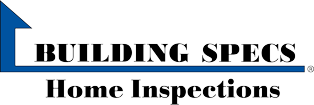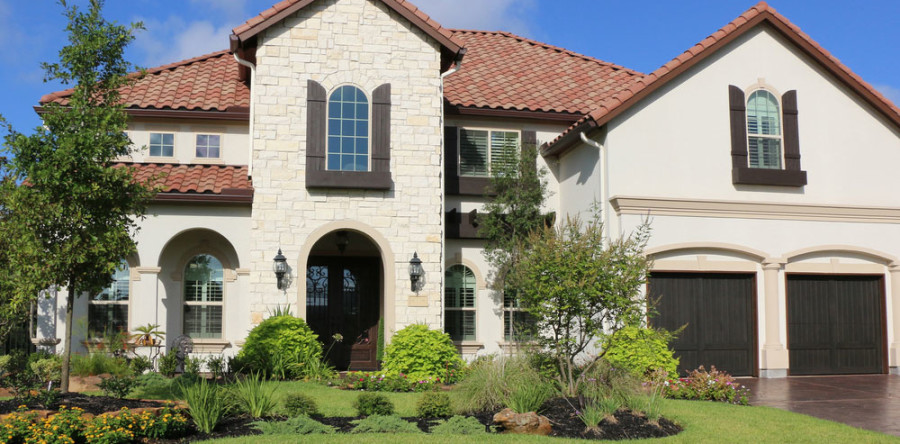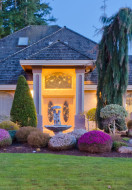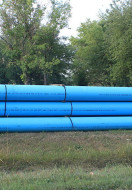The how and why of EIFS moisture inspections, EIFS (sometimes referred to as "synthetic stucco") had its beginning in Europe at the end of Word War II, and quickly became popular as a building material because of its ease of installation and cost efficiency. It was introduced to the U.S. market in 1969 but was not widely used as a construction material until the 1980's. It was first used in commercial applications, and became popular as a residential construction material.
Today EIFS buildings account for approximately 17% of the commercial market and approximately 3.5% of the residential market. The first company to manufacture EIFS in the United States was the Dryvit company, which is why EIFS is sometimes referred to as "Dryvit".The acronym "EIFS" stands for Exterior Insulated Finishing System. EIFS is a non-load bearing exterior wall finishing system that gives the building a stucco-like appearance.
The system consists of four components:
- Panels of expanded polystyrene foam insulation glued or screwed to the substrate or vapor barrier.
- A base coat that is troweled over the foam insulation panels.
- A glass fiber reinforcing mesh that is laid over the polystyrene insulation panels and fully embedded in the base coat.
- A finish coat that is troweled over the base coat and the reinforcing mesh. The base coat, mesh and finish coat are usually 1/8 to 1/4 inches thick. This is also called the lamina.
There are two basic types of EIFS currently in use in the U.S., barrier and water-managed. Barrier EIFS is designed to divert all water from the exterior surface. Water-managed EIFS anticipates that some water will penetrate the surface and incorporates redundant water-management features (flashing, weeping, drainage plane and water-durable substrates) to ensure that water that breaches the exterior finish will quickly exit the system. Most EIFS clad homes in the U.S. are barrier EIFS systems.The advantage of EIFS as a finishing system is that it is energy efficient and economical to install. Unfortunately, barrier EIFS systems have been found to have problems, often serious, with moisture intrusion.
In 1995, building inspectors in Wilmington, North Carolina discovered severe moisture damage on hundreds of EIFS clad homes in that area. Similar problems have since been discovered on EIFS clad homes in other parts of the country, resulting in a class action lawsuit against the EIFS manufacturers. In some cases, removal of the EIFS cladding has revealed extensive water damage to the framing, jeopardizing the building's structural integrity.Because the EIFS system is watertight, water that penetrates behind the EIFS sheathing does not readily evaporate.
The barrier EIFS system is designed to allow for small amounts of water vapor, but the system does not allow larger amounts of water to readily evaporate. Water can become trapped and can soak into the substrate and framing. Unlike more traditional facades, there is normally no secondary barrier (housewrap) installed behind the EIFS to protect the sheathing or framing. Severe damage could occur without any exterior signs. These problems can exist regardless of the age of the building or the quality of construction. Some of our inspections have revealed extensive damage to buildings' substrate and framing, of which the homeowners were completely unaware.
If problem areas are identified, preventative measures can be taken before damage occurs, or before it becomes extensive enough to jeopardize the structural integrity of the building. Early detection and prevention of moisture intrusion can save thousands of dollars in repairs later on.Water does not usually enter through the EIFS system itself, but through penetrations in the EIFS. The most common areas of moisture intrusion are around windows and doors, at the intersections between the EIFS and the roof, and areas where the EIFS has been penetrated by attachments such as mailboxes, shutters, decorative molding, railings, deck attachments, vents, chimney caps over EIFS clad chimneys, and utility lines and pipes. Proper attachment of penetrations is essential to prevent water intrusion. EIFS systems also depend heavily on sealant (caulking) to keep moisture from getting behind the system. If the sealant is decayed, damaged or missing, water intrusion may occur.
Moisture intrusion may also occur if the EIFS is cracked or damaged.
An EIFS inspection is intended to identify areas of high moisture content in the sheathing and framing, to identify areas where the substrate has already been damaged by water, and to identify areas of potential moisture intrusion. Often, an EIFS inspection will detect leaks that are not related to the EIFS system at all. For example, our inspectors have located roof leaks and leaks from shower enclosures during EIFS inspections.
There are standard inspection protocols governing EIFS inspections, but each building must be evaluated independently. The nature and scope of the inspection may change according to what is discovered. The inspection may take several hours, and may even span more than one day. Before the inspection the buyer, homeowner, or other client is asked to complete a survey detailing what specific areas of concern should be addressed, any problems that have been seen, and other information about the building. When the EIFS inspection occurs as a result of a real estate transfer, the EIFS inspector should coordinate with the home inspector and the termite inspector to share information and findings. After the inspection, a customized report is prepared for the homeowner or client, including recommendations about maintaining an EIFS building to minimize the risk of water damage.
In a standard EIFS inspection a non-intrusive moisture scanner is used to identify areas of relatively high moisture content. In areas where the scanner indicates a high moisture content a probe moisture meter is inserted to test for the moisture content of the substrate and to test for damage to the substrate. The probe moisture meter is also used at random locations throughout the system, and in areas where potential moisture intrusion commonly occurs, such as near windows.
A high moisture content in the probe reading indicates that water intrusion has occurred, and may be causing structural damage to the building. If the probe indicates that the substrate is soft, this could be a sign that damage has already occurred.
The probe moisture meter will make small holes in the EIFS, which are then sealed by the inspector with an industry-approved sealant.If the probe moisture meter indicates high moisture content, or if areas of soft substrate are found, it may be necessary or advisable to conduct an invasive inspection. This will involve removing sections of the EIFS to physically inspect the substrate or framing. Sometimes significant damage is discovered, which, if not repaired, could jeopardize the building's structural integrity. The invasive inspection also allows the inspector to examine the building for insects.
Regular inspections of EIFS buildings are recommended by the industry to minimize the risk of serious damage and to identify potential problems before they become serious. Be sure to utilize the services of a qualified and trained EIFS inspector.







